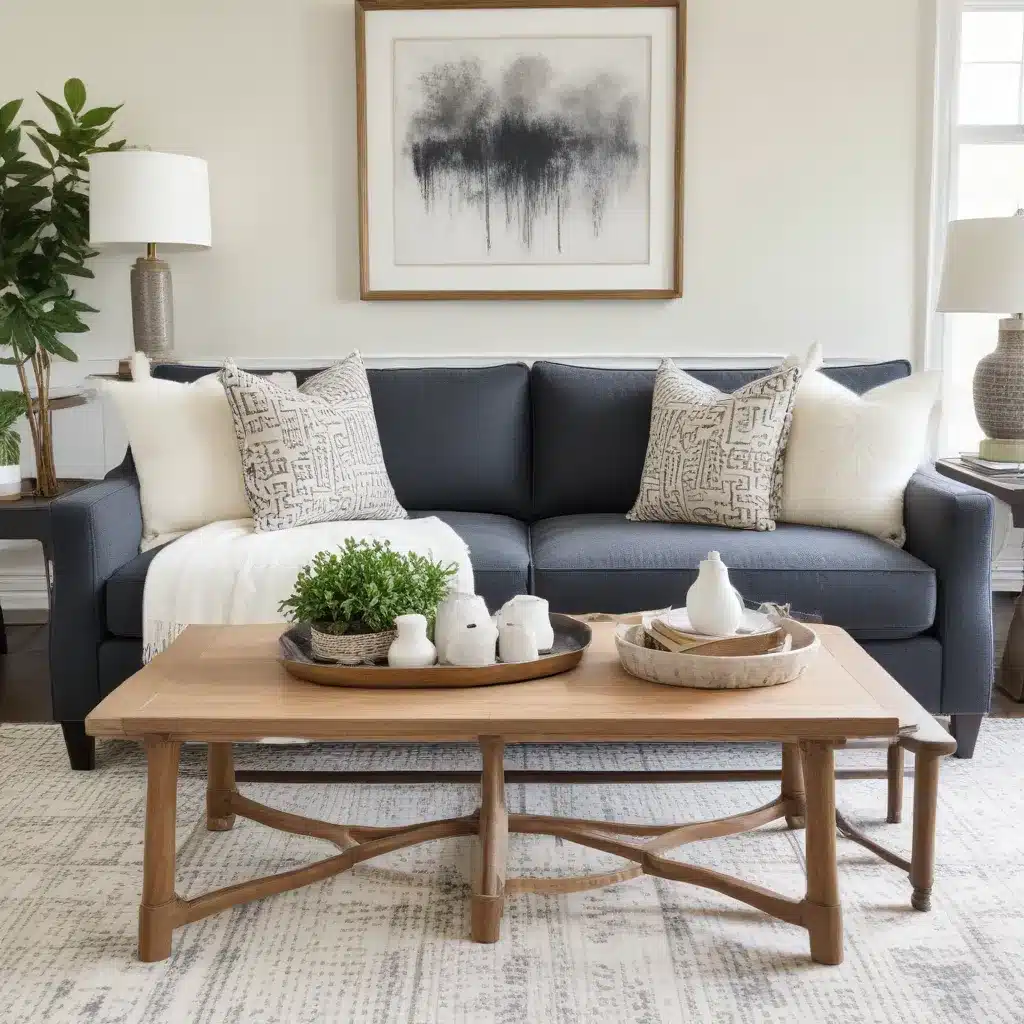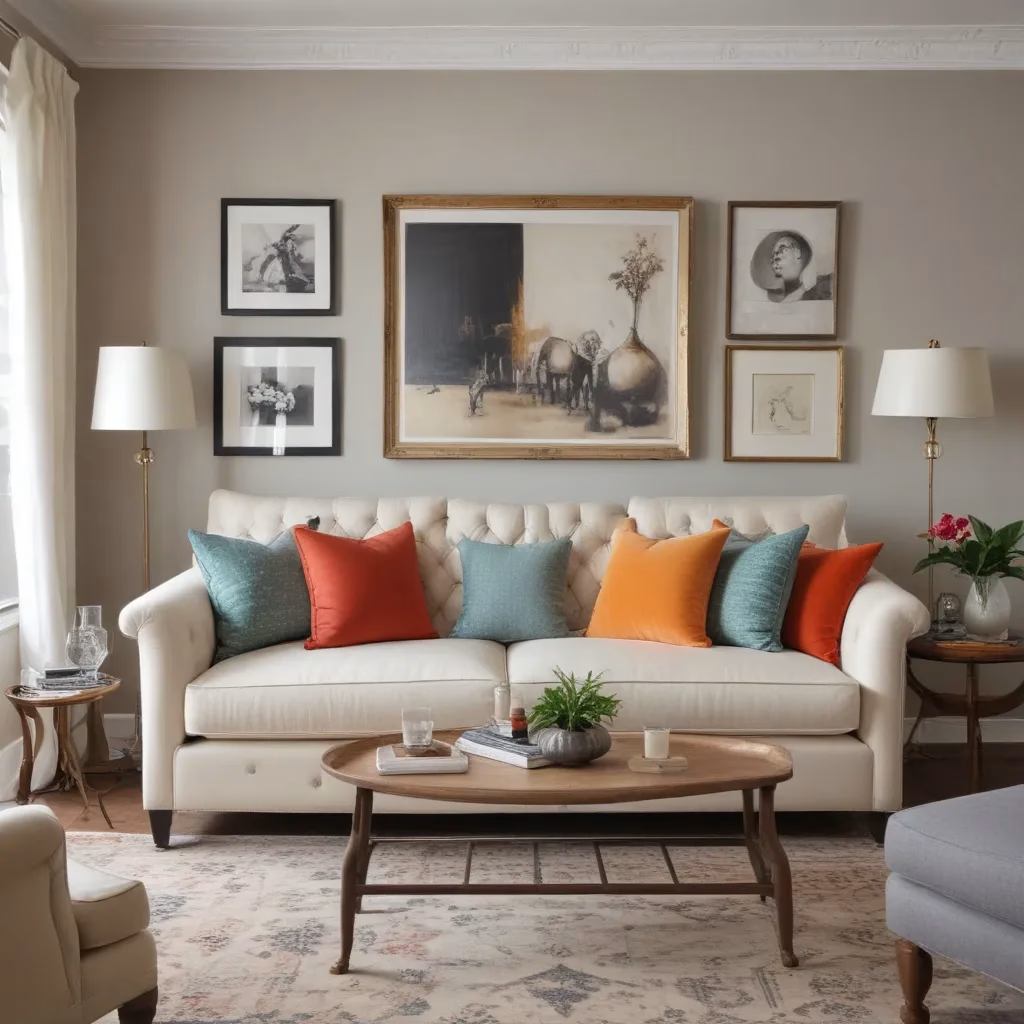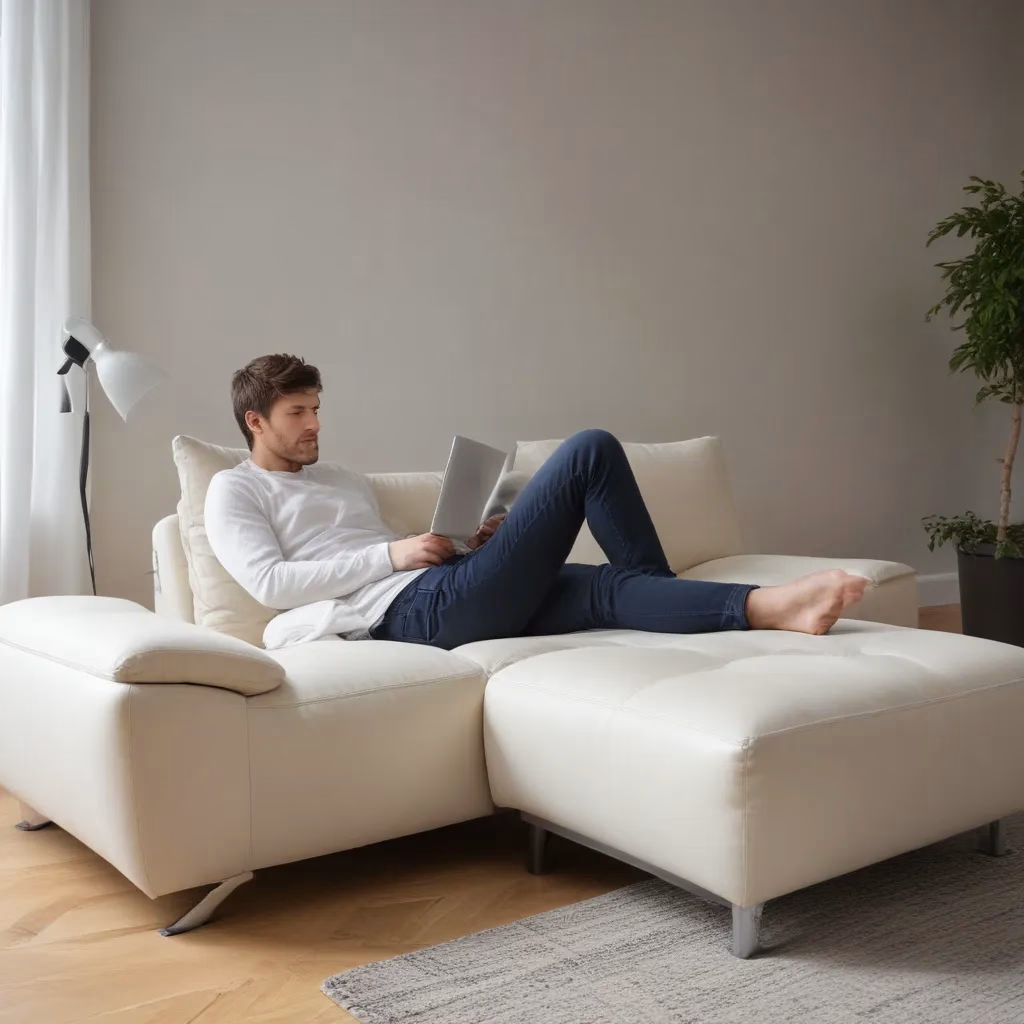
As a furniture specialist with years of experience, I’ve seen firsthand how the right sofa can transform a living space. One of the most powerful techniques I’ve discovered is the art of layering textures. This approach not only enhances the visual appeal of your sofa but also creates a rich, inviting atmosphere in your entire room. Let’s explore how you can master this technique to elevate your home decor.
The Foundation of Texture Layering
When it comes to creating a visually interesting and comfortable sofa setup, starting with a solid foundation is key. In my experience, selecting a neutral base for your sofa provides the perfect canvas for experimenting with various textures and colors.
I often recommend clients choose a sofa in a versatile shade like beige, gray, or even a soft white. These neutral tones act as a blank slate, allowing you to build upon them with different textural elements. Think of your sofa as the backdrop for a painting – it should complement and enhance the other elements you’ll add, rather than competing with them.
Over the years, I’ve found that a neutral sofa base offers incredible flexibility. It enables you to easily update your living room’s look by simply swapping out accessories, without the need for a complete overhaul. This approach not only saves money in the long run but also allows for seasonal changes or quick style refreshes whenever the mood strikes.
Mixing Materials for Visual Interest
Once you have your neutral base, it’s time to start playing with different materials. This is where the magic happens, and where you can really let your personal style shine through. I’ve always been fascinated by how different textures can completely change the feel of a space, and I love helping clients discover unexpected combinations that work beautifully together.
One of my favorite techniques is to pair smooth, sleek surfaces with rougher, more tactile ones. For example, if you have a leather sofa, try adding some chunky knit throws or pillows with a nubby texture. The contrast between the cool, smooth leather and the warm, cozy knits creates a dynamic visual and tactile experience.
Another great combination I often suggest is mixing natural and synthetic materials. A linen-upholstered sofa can be beautifully accented with silk pillows or a faux fur throw. The juxtaposition of these different textures adds depth and interest to your seating area, making it feel more curated and thoughtful.
The Art of Scaling Textures
When it comes to layering textures, scale plays a crucial role in creating a balanced and visually appealing arrangement. I always advise my clients to think about varying the size and prominence of different textural elements to create a harmonious look.
Start by considering the texture of your sofa itself. Is it a tightly woven fabric, or does it have a more pronounced texture like corduroy or velvet? This will inform your choices for the additional textures you’ll introduce.
For a sofa with a finer texture, you might want to add some larger-scale textures through throw pillows or blankets. I once worked with a client who had a beautiful sofa with a subtle herringbone pattern. We paired it with oversized, chunky knit pillows and a soft, shaggy throw. The contrast in scale between the fine herringbone and the larger textures created a visually striking and inviting seating area.
Conversely, if your sofa has a more prominent texture, you can balance it with smaller-scale textures in your accessories. A heavily textured bouclé sofa, for instance, pairs wonderfully with smooth silk pillows or a sleek, woven cotton throw.
Patterns and Textures: A Dynamic Duo
Incorporating patterns into your textured sofa styling can take your design to the next level. However, it’s important to strike the right balance to avoid overwhelming the space. I’ve found that mixing patterns and textures is an art form that, when done right, can create a truly stunning effect.
One approach I often recommend is to choose patterns that complement the existing textures in your space. For example, if you have a leather sofa with a smooth texture, you might add pillows with a subtle geometric pattern that echoes the clean lines of the leather. This creates a cohesive look while still adding visual interest.
Another technique I love is layering different patterns within the same color family. This allows you to create depth and interest without the risk of clashing. For instance, on a neutral gray sofa, you could combine pillows with stripes, florals, and abstract patterns, all in varying shades of blue. The consistent color palette ties everything together, while the mix of patterns and textures keeps the eye engaged.
It’s also worth considering the scale of your patterns in relation to your textures. A large-scale pattern can work beautifully with finer textures, while smaller, more intricate patterns often pair well with chunkier textures. The key is to create contrast and balance.
Layering for Depth and Comfort
One of the most enjoyable aspects of styling a sofa with layered textures is the opportunity to create a sense of depth and unparalleled comfort. I always encourage my clients to think beyond just the visual aspect and consider how the different textures will feel when they’re relaxing on their sofa.
Start with your base layer – the sofa itself. If you’ve chosen a sofa with a smoother texture, like leather or a tightly woven fabric, you might want to add a soft, plush throw blanket as your next layer. This not only adds visual interest but also provides a cozy element for chilly evenings.
Next, consider your throw pillows. I like to use a variety of sizes and shapes to create depth. Larger pillows at the back, medium-sized ones in front, and perhaps a small lumbar pillow in the center can create a layered, inviting look. Mix up the textures here too – maybe a velvet pillow next to a linen one, with a fuzzy accent pillow for contrast.
Don’t forget about the floor! A textured rug underneath your sofa can add another layer of depth to your overall design. I once worked on a project where we paired a sleek, modern sofa with a chunky, hand-woven wool rug. The contrast was striking, and it helped to ground the seating area while adding warmth and texture to the space.
Color Coordination in Textured Designs
While we’re focusing on textures, it’s important not to overlook the role of color in your layered sofa design. The right color palette can enhance your textural choices and create a cohesive, polished look.
I often advise clients to start with a color scheme based on their sofa and the overall room design. If you have a neutral sofa, you have the flexibility to introduce color through your textured accessories. For example, a gray sofa could be beautifully accented with pillows and throws in shades of blue, from navy to sky blue, creating a calming, monochromatic look.
Alternatively, you could opt for a complementary color scheme. A beige sofa, for instance, could be livened up with rich jewel tones like emerald green or deep purple. The key is to choose colors that work well together and enhance the textures you’ve selected.
Remember, texture affects how we perceive color. A rough, nubby texture can make a color appear more muted, while a smooth, shiny surface can make colors look more vibrant. Keep this in mind when selecting your textured elements and their colors.
Seasonal Updates Through Texture
One of the best things about mastering layered textures is the ability to easily update your sofa’s look with the changing seasons. I always encourage my clients to think about how they can use textures to reflect the time of year and create a space that feels current and comfortable.
In the warmer months, I love to lighten things up with airy, breathable textures. Linen throws and cotton pillows in light, fresh colors can make your sofa feel cool and inviting. You might also consider introducing some natural elements, like a basket weave pillow or a jute pouf, to bring a touch of the outdoors in.
As the weather cools, it’s time to cozy things up. This is when I bring out the heavier textures – think chunky knit blankets, velvet pillows, and maybe even a faux fur throw. These textures not only look warm and inviting but also provide actual warmth and comfort on chilly evenings.
The beauty of this approach is that you can make significant changes to your room’s feel without having to invest in new furniture. A few well-chosen textured accessories can completely transform your sofa and, by extension, your entire living space.
Maintaining Your Textured Sofa Style
Creating a beautifully textured sofa setup is one thing, but maintaining it is another. Over the years, I’ve learned some tricks to keep textured elements looking their best, and I’m always happy to share these with my clients.
First and foremost, it’s important to understand the care requirements for different textures. Some materials, like silk or velvet, may require professional cleaning, while others can be easily spot-cleaned at home. Always check the care labels on your textiles and follow the instructions carefully.
For throw pillows and blankets, I recommend regular fluffing and reshaping to keep them looking fresh. If you have pillows with removable covers, take advantage of this feature and wash them periodically according to the care instructions.
Don’t forget about the sofa itself! Regular vacuuming can do wonders for maintaining the texture and appearance of your sofa upholstery. For leather sofas, a gentle wipe-down with a slightly damp cloth can help keep the surface clean and supple.
Lastly, consider rotating your textured accessories periodically. This not only gives you a chance to clean and air out items that aren’t in use but also helps prevent uneven wear and fading, especially in areas that receive direct sunlight.
The Impact of Lighting on Textured Designs
In my years of experience, I’ve come to appreciate the significant role that lighting plays in showcasing textured sofa designs. The right lighting can enhance textures, create depth, and set the mood for your entire living space.
Natural light is fantastic for highlighting textures. If your sofa is near a window, observe how the changing daylight affects the appearance of your textured elements throughout the day. You might find that certain textures look particularly striking during the golden hours of early morning or late afternoon.
For artificial lighting, I often recommend a mix of ambient and accent lighting to create a layered effect that complements your textured sofa styling. Table lamps or floor lamps near your sofa can provide focused light that accentuates the textures of your throw pillows and blankets.
Consider the color temperature of your light bulbs as well. Warm white light (around 2700-3000K) can create a cozy, inviting atmosphere that works well with most textures. However, if you have a lot of cool-toned textures, you might prefer a slightly cooler light (around 3500K) to bring out their true colors.
Don’t forget about the power of shadows in emphasizing texture. A strategically placed lamp can cast interesting shadows that highlight the three-dimensional quality of highly textured fabrics or knits.
Texture and Sofa Style: Finding the Perfect Match
When it comes to layering textures, it’s crucial to consider the style of your sofa. Different sofa designs lend themselves to different textural approaches, and finding the right match can elevate your entire living room design.
For modern, minimalist sofas with clean lines, I often recommend contrasting the sleek design with rich, tactile textures. A smooth leather sofa, for example, can be beautifully complemented with nubby wool throws and pillows in geometric patterns. This juxtaposition of smooth and rough textures creates an interesting visual and tactile experience.
On the other hand, if you have a more traditional sofa with ornate details, you might want to echo those elements in your texture choices. Tufted sofas pair wonderfully with silky pillows and throws with subtle patterns. The key is to enhance the sofa’s existing texture without overwhelming it.
For casual, laid-back sofa styles, like a slipcovered or linen sofa, I love to play up the relaxed vibe with equally casual textures. Think loose-weave cotton throws, pillows with fringe or tassels, and perhaps a soft, shaggy rug underneath. These textures reinforce the comfortable, lived-in feel of the sofa.
Remember, the goal is to create a cohesive look that feels intentional and harmonious. Your textured elements should complement your sofa style, not fight against it.
Textural Balance in Open-Plan Living
In today’s homes, open-plan living spaces are increasingly common, and this presents both challenges and opportunities when it comes to sofa styling and texture layering. I’ve worked on numerous projects where balancing textures across an open space was key to creating a cohesive design.
The trick is to think of your open-plan area as a whole, while still defining separate zones through your use of texture. Your sofa area can serve as a textural anchor for the living space, with complementary textures echoed in the dining and kitchen areas.
For example, if you’ve layered your sofa with a mix of smooth and rough textures, you might carry this theme through to your dining area with a sleek table paired with chairs upholstered in a textured fabric. In the kitchen, you could introduce similar textures through bar stools or decorative elements.
Color can play a crucial role in tying these textures together across an open space. I often advise clients to choose a color palette that works throughout the area, using different textures to add depth and interest within that palette.
Remember, in an open-plan space, less can sometimes be more. You don’t want the eye to be overwhelmed as it moves from one area to another. Aim for a balanced distribution of textures that creates flow and continuity throughout the space.
The Role of Accessories in Textural Design
While we’ve focused a lot on sofa-specific elements like throws and pillows, it’s important not to overlook the role that other accessories play in creating a richly textured living space. The right accessories can complement and enhance your sofa’s textural design, creating a cohesive and inviting atmosphere.
Area rugs are a fantastic way to add another layer of texture to your sofa area. A plush, high-pile rug can add warmth and softness underfoot, contrasting beautifully with a sleek leather sofa. Alternatively, a flat-woven rug with an interesting pattern can provide a subtle textural element that doesn’t compete with more prominent textures on the sofa itself.
Wall art is another opportunity to introduce texture. Consider pieces that have a three-dimensional quality, like textured canvas paintings, woven wall hangings, or even sculptural elements. These can echo the textures you’ve used on your sofa, creating a sense of harmony in the room.
Don’t forget about plants! Natural elements can add a wonderful organic texture to your space. A fiddle leaf fig with large, glossy leaves can provide a beautiful contrast to softer, fabric textures. Or, for a more delicate touch, consider a trailing plant like a pothos, which can add a soft, cascading texture to a side table or shelf near your sofa.
Lastly, consider the textures of your hard surfaces. A rough-hewn wooden coffee table can add a natural, tactile element to your seating area, while a sleek metal or glass table can provide a cool contrast to softer sofa textures.
By considering all these elements together, you can create a rich, layered textural design that starts with your sofa but extends throughout your living space, creating a cohesive and inviting atmosphere.
In conclusion, mastering the art of layered textures in sofa styling is a journey of exploration and creativity. It’s about understanding the interplay between different materials, considering the impact of color and light, and creating a space that’s not just visually appealing but also comfortable and inviting. Whether you’re working with a minimalist modern sofa or a plush traditional piece, the right combination of textures can transform your living space into a true reflection of your personal style.
Remember, there are no hard and fast rules when it comes to texture layering – it’s all about what feels right to you. Don’t be afraid to experiment, mix unexpected elements, and most importantly, create a space that you love coming home to. After all, your sofa is more than just a piece of furniture – it’s the heart of your living space, where memories are made and comfort is king.
For more inspiration and expert advice on all things sofa-related, be sure to check out Sofa Spectacular. Happy styling!



